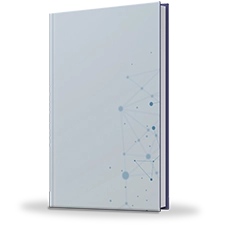Atomic Clock Market Outlook – 2027
Atomic clock is a device, which uses resonator that is resonance frequencies of atoms. A resonator is regulated by frequency of microwave electromagnetic radiations emitted by quantum transition of an atom. Resonation at extremely consistent frequencies is possible, which is an added advantage to this approach. In terms of precision and accuracy, atomic clocks are most accurate.
They consist of cesium beam, rubidium gas cell, and hydrogen maser. Thus, they find their applications in military, satellite systems, and aerospace industries. Innovations in these industries pave way for atomic clocks. The global market is experiencing a significant growth, and is expected to grow considerably in next few years.
The global atomic clock market is segmented on the basis of type, application, industry vertical and region. Based on type, the market is divided into cesium atomic clock, rubidium atomic clock, and hydrogen maser atomic clock. In terms of application, the market is categorized into military & space, aerospace, telecom & broadcasting, scientific & metrology research, and others. In terms of industry vertical, the atomic clock market is segregated into building & construction, IT & telecom, healthcare, aerospace & defense, industrial, and others. Geographically, the market is analyzed across several regions such as North America, Europe, Asia-Pacific, and Latin America, Middle East & Africa (LAMEA).
Key players operating in the global atomic clock industry include Frequency Electronics, AccuBeat Ltd, IQD, Microsemi, Casic, Spectratime, Chengdu Spaceon Electronics, Excelitas Technologies, Zurich Instruments, Stanford Research Systems and others. These companies have adopted several strategies such as product launches, partnerships, collaborations, mergers & acquisitions, and joint ventures to strengthen their foothold in the global atomic clock market.
COVID-19 Scenario Analysis
- Global atomic clock market has been significantly impacted by the COVID-19 outbreak. New projects throughout the world have stalled, which, in turn, have significant led to decline in demand for atomic clocks.
- Global factories have struggled to manufacture, integrate and assemble new technologies as workers have stayed in their homes and even the already available devices in various warehouses cannot be transported due to current rules and regulations, which, in turn, has disrupted the global supply chains.
- The impact of COVID-19 on market is temporary as just the production and supply chain is stalled. Once the situation improves, production, supply chains, and demand for these products are gradually going to increase as various growing industries.
Top Impacting Factors
Rise in use of atomic clocks in military, navigation system satellites, and aerospace is the major factor that boosts the market growth. Moreover, use of these clocks in metrology and radio astronomy, as improvised precision is required in these fields, also propels the atomic clock industry growth. However, high cost of atomic clocks and their size hinders the market growth. In addition, growth in use of atomic clocks in the telecommunication industry is expected to drive the market further as atomic clocks are needed by network providers for effective transmission of digital signals.
New Product Launches to Flourish the Market
NASA recently developed a deep space atomic clock. It uses quartz crystal oscillators with specific types of atoms to attain stability as only quartz crystal is not very stable. So, mercury atoms were combined with quartz crystal and the atomic clock would be off by less than a Nano second after four days and less than a micro second after one year. Thus, it would take around ten million years for the clock to go incorrect by a second.
This would indeed help in reducing the error and impact if only quartz crystal were used and thus improving accuracy and precision of measuring the position of fast-moving spacecrafts.
Surge in Use in Telecommunication Industry
Due to the growth in telecommunication technologies, the speed and amount of data required by consumers worldwide is increasing day by day. To meet this demand, a constellation of micro or nano satellites that circle the planet in low earth orbit needs to be deployed. However, atomic clocks used in these satellites provide extremely precise synchronization according to the global time standard. Thus, there is surge in use of atomic clocks in the telecommunication industry. In addition, development of quantum atomic clocks, which consume much less power, is expected to drive the atomic clock market growth.
Key Benefits of the Report
- This study presents the analytical depiction of the global atomic clock market forecast along with the current trends and future estimations to determine the imminent investment pockets.
- The report presents information related to key drivers, restraints, and opportunities along with detailed analysis of the global atomic clock market share.
- The current market is quantitatively analyzed to highlight the global atomic clock market growth scenario.
- Porter’s five forces analysis illustrates the potency of buyers & suppliers in the market.
- The report provides a detailed global atomic clock market analysis based on competitive intensity and how the competition will take shape in coming years.
Questions Answered in the Atomic Clock Market Research Report
- Who are the leading market players active in the atomic clock market size?
- What would be the detailed impact of COVID-19 on the market?
- What current trends would influence the market in the next few years?
- What are the driving factors, restraints, and opportunities in the atomic clock market trends?
- What are the projections for the future that would help in taking further strategic steps?
Atomic Clock Market Report Highlights
| Aspects | Details |
| By Type |
|
| By Application |
|
| By Region |
|
| Key Market Players | Leonardo, Tekron, Stanford Research Systems, Microchip Technology Inc., IQD Frequency Products Ltd., Orolia, VREMYA-CH JSC, Oscilloquartz, AccuBeat ltd., Excelitas Technologies Corp. |
Loading Table Of Content...



